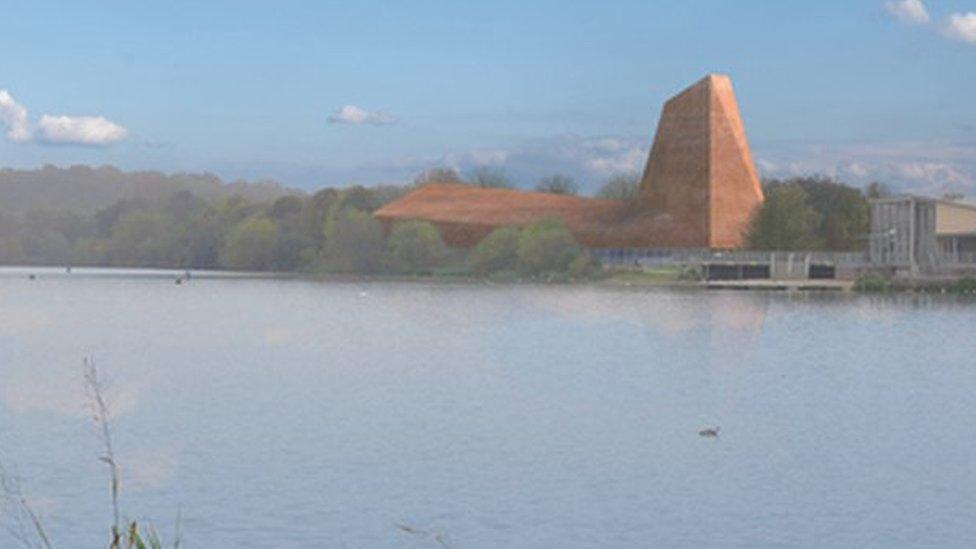Peterborough Arch: Landmark sculpture removed from city gateway
- Published
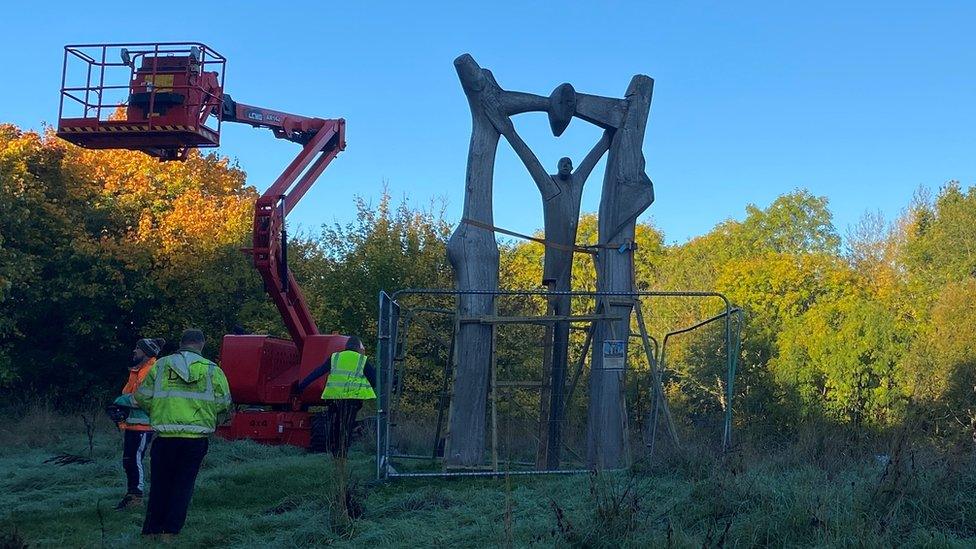
The Peterborough Arch is being removed from Thorpe Meadows for a full inspection ahead of urgent repairs
A wooden landmark that overlooks a main road into a city has been taken down so it can undergo essential repairs.
Peterborough Arch, by Essex-born artist Lee Grandjean, has stood on Thorpe Meadows in Peterborough for 34 years.
The 4m (13ft) high artwork, carved from iroko wood and pegged together, needs to be restored because of exposure to the elements.
Louise Thirlwall, of Cambridgeshire's Nene Park Trust, said: "It's a sad day, but hopefully it will be back soon."
The trust, which manages the installations in the Peterborough Sculpture Collection, wants to launch a fundraising appeal to help cover the cost of the repairs once an inspection and estimates are completed.
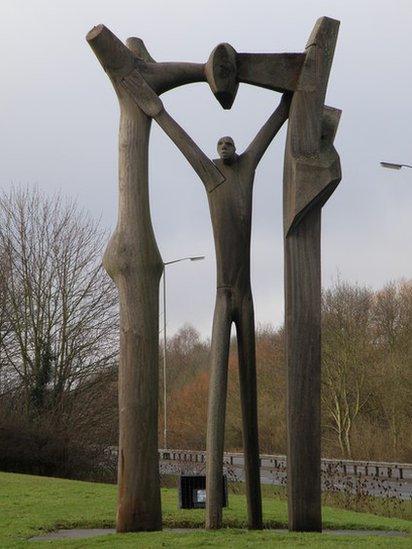
The sculpture is a well-known local landmark, standing above a dual carriageway on one of the city's approaches
The arch was originally installed as a gateway to the city because it overlooked the area before the surrounding trees obscured the view.
"Peterborough Arch sits right by Longthorpe Parkway, which is one of the main dual carriageways into the city centre - so many people pass by it every day and know it," said Ms Thirlwall, a project development officer.
"It marks and celebrates all the communities that have moved into Peterborough over thousands of years... and all the communities that still move through Peterborough and are here today.
"If we can raise enough money, I hope it will be back here by spring for visitors to enjoy around the trail."
The arch will be put in storage over the winter while conservators inspect it for repairs needed, with its joints and detailed carvings of its face and hands expected at this stage to dominate much of the restoration work.

What is The Peterborough Arch?
The Peterborough Arch was installed on Thorpe Meadows on the edge of Peterborough in 1988
It was carved by Lee Grandjean, born in 1949 and brought up in Harlow, Essex
He was deputy head of sculpture at London's Royal College of Art and now works from a studio in Norfolk
Grandjean chose the site to align the sculpture with the city centre and the cathedral
Straight lines and linear shapes represent the city's architecture, while flowing shapes represent green spaces and landscapes
The statue is part of the Peterborough Sculpture Collection created when Peterborough was being developed as a new town
Peterborough Development Corporation commissioned new artworks during the 1970s and '80s by leading British sculptors including Anthony Gormley and Anthony Caro

Find BBC News: East of England on Facebook, external, Instagram, external and Twitter, external. If you have a story suggestion email eastofenglandnews@bbc.co.uk, external
Related topics
- Published8 October 2022
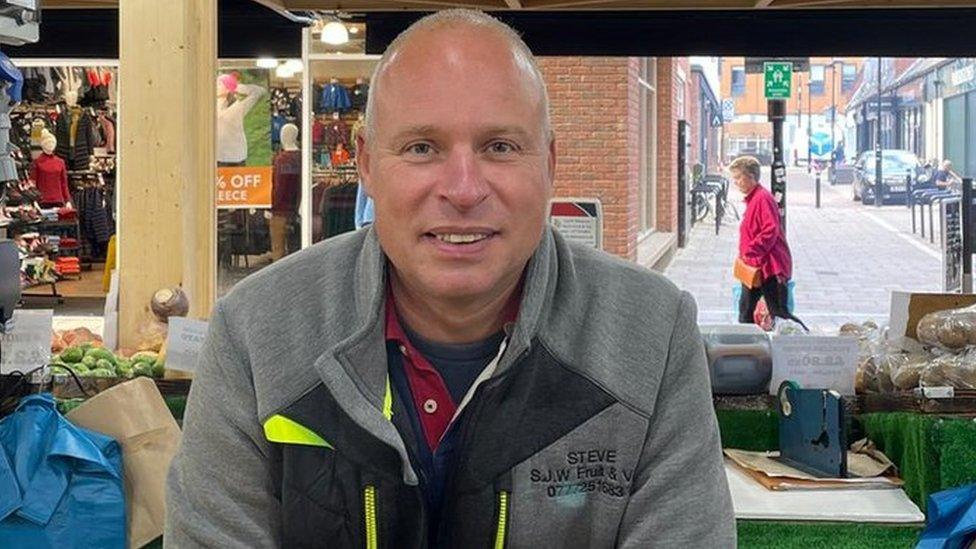
- Published8 October 2022
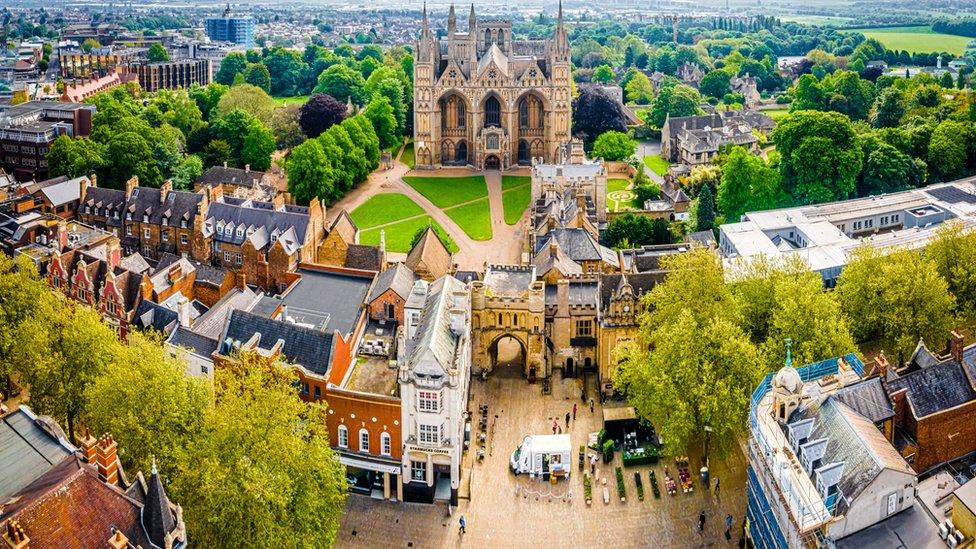
- Published24 March 2021
